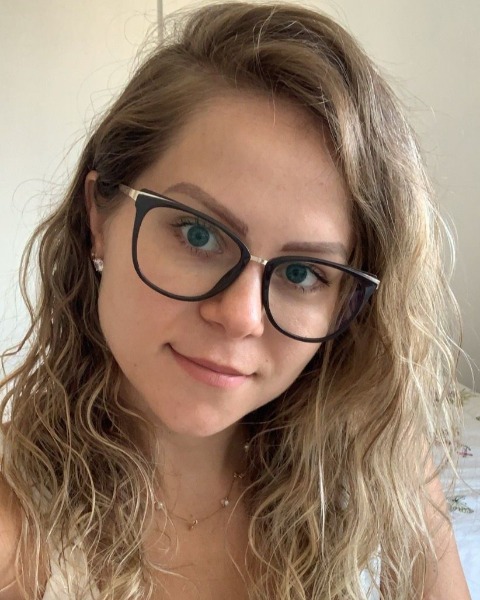Drug Utilization Research
Session: Poster Session B
(015) Publicly funded access to prescription medicines in Brazil from 1998 to 2019
Saturday, August 26, 2023
8:00 AM - 6:00 PM ADT
Location: Convention Hall
Publication Number: 679

Bianca V. Bianchini, PhD Student
PhD Student in Epidemiology
Federal University of Rio Grande do Sul, Brazil
Presenting Author(s)
Background: Medicines stand out as the item that most contributes to Brazilian families' spending on health care, in addition to health plans. In 1990s and 2000s, public policies were implemented in Brazil to expand access to treatment for chronic diseases and other health conditions, free of charge or at low cost, through co-payment.
Objectives: To evaluate the publicly funded access (PFA) to medicines prescribed in health services in Brazil from 1998 to 2019.
Methods: Secondary data analysis from the National Household Sample Survey (PNAD), carried out in 1998, 2003 and 2008, and data from the National Health Survey (PNS) from 2013 to 2019. The PNAD and PNS are population-based household surveys containing representative samples of the Brazilian population and covering 21 years. These surveys are conducted by Brazilian National Institute of Geography and Statistics (IBGE) in partnership with the Ministry of Health. The main outcome analyzed was PFA to at least one of the medicines prescribed in a consultation in the last two weeks prior to the interview. A Poisson regression model was used to investigate the association between socio-demographics (gender, age, education level, self-reported race or skin color, and per capita household income) and PFA. The results were presented as prevalence ratio (PR) and 95% confidence interval (CI 95%).
Results: Access to free medicines progressively increased in the evaluated period, from 27.7% (CI 95% 26.7-28.8) in 1998 to 49.2% in 2013 (CI 95% 47.5-50.9), reducing to 43.3% in 2019 (CI 95% 41.8-44.7). Higher prevalence of PFA to medicines were found in individuals with lower education (1998, PR 3.73 (CI 95% 2.76-5.03); 2003, 5.08 (4.31-5.99); 2008, 2.95 (2.63-3.31); 2013, 2.31 (1.92-2.78); 2019, 2.45 (2.09-2.88)); lower per capita household income (1998, 2.17 (1.95-2.40); 2003, 1.82 (1.71-1.94); 2008, 1.63 (1.50-1.77); 2013, 1.36 (1.25-1.49); 2019, 1.46 (1.35-1.58)); and non-white race/skin color (1998, 1.21 (1.13-1.29); 2003, 1.14 (1.09-1.20); 2008, 1.14 (1.11-1.17); 2013, 1.07 (1.01-1.14); 2019, 1.1 (1.04-1.17)). Regarding gender, no difference was found, except to 2003, when a higher prevalence was observed among women, 1.06 (1.01-1.11). Younger individuals had a lower prevalence of PFA than older ones in 2003, 0.92 (0.80-0.98); 2013, 0.91 (0.83-0.99); and 2019, 0.91 (0.84-0.99).
Conclusions: During the study period, access to prescription medicines increased. Access was more prevalent in individuals with lower education, poorer and non-white, suggesting greater equity in access to this essential therapeutic resource, possibly due to greater use of health services offered in a chain by the unified health system (SUS).
Objectives: To evaluate the publicly funded access (PFA) to medicines prescribed in health services in Brazil from 1998 to 2019.
Methods: Secondary data analysis from the National Household Sample Survey (PNAD), carried out in 1998, 2003 and 2008, and data from the National Health Survey (PNS) from 2013 to 2019. The PNAD and PNS are population-based household surveys containing representative samples of the Brazilian population and covering 21 years. These surveys are conducted by Brazilian National Institute of Geography and Statistics (IBGE) in partnership with the Ministry of Health. The main outcome analyzed was PFA to at least one of the medicines prescribed in a consultation in the last two weeks prior to the interview. A Poisson regression model was used to investigate the association between socio-demographics (gender, age, education level, self-reported race or skin color, and per capita household income) and PFA. The results were presented as prevalence ratio (PR) and 95% confidence interval (CI 95%).
Results: Access to free medicines progressively increased in the evaluated period, from 27.7% (CI 95% 26.7-28.8) in 1998 to 49.2% in 2013 (CI 95% 47.5-50.9), reducing to 43.3% in 2019 (CI 95% 41.8-44.7). Higher prevalence of PFA to medicines were found in individuals with lower education (1998, PR 3.73 (CI 95% 2.76-5.03); 2003, 5.08 (4.31-5.99); 2008, 2.95 (2.63-3.31); 2013, 2.31 (1.92-2.78); 2019, 2.45 (2.09-2.88)); lower per capita household income (1998, 2.17 (1.95-2.40); 2003, 1.82 (1.71-1.94); 2008, 1.63 (1.50-1.77); 2013, 1.36 (1.25-1.49); 2019, 1.46 (1.35-1.58)); and non-white race/skin color (1998, 1.21 (1.13-1.29); 2003, 1.14 (1.09-1.20); 2008, 1.14 (1.11-1.17); 2013, 1.07 (1.01-1.14); 2019, 1.1 (1.04-1.17)). Regarding gender, no difference was found, except to 2003, when a higher prevalence was observed among women, 1.06 (1.01-1.11). Younger individuals had a lower prevalence of PFA than older ones in 2003, 0.92 (0.80-0.98); 2013, 0.91 (0.83-0.99); and 2019, 0.91 (0.84-0.99).
Conclusions: During the study period, access to prescription medicines increased. Access was more prevalent in individuals with lower education, poorer and non-white, suggesting greater equity in access to this essential therapeutic resource, possibly due to greater use of health services offered in a chain by the unified health system (SUS).

